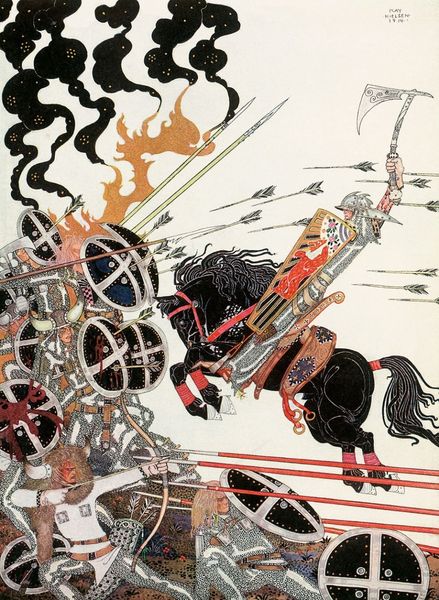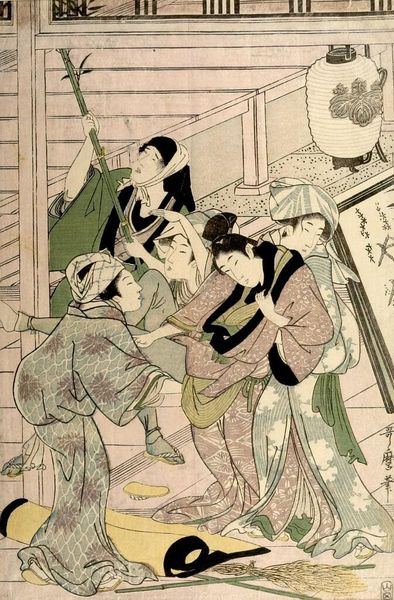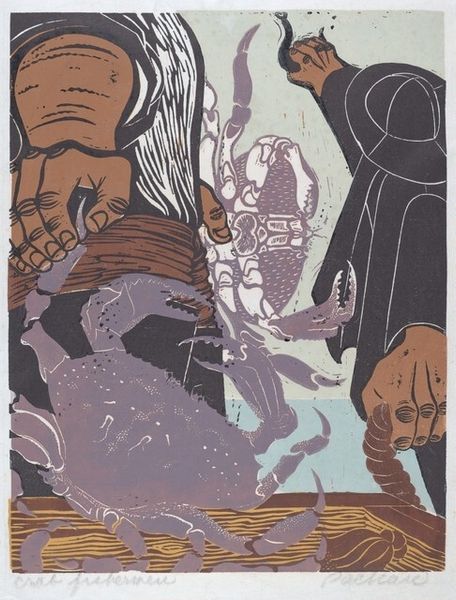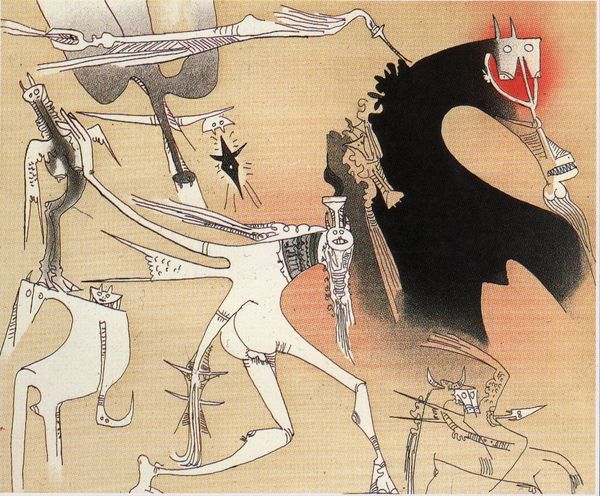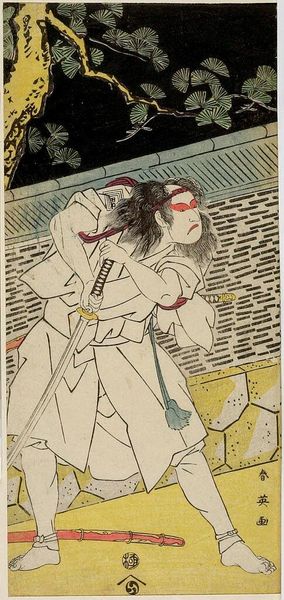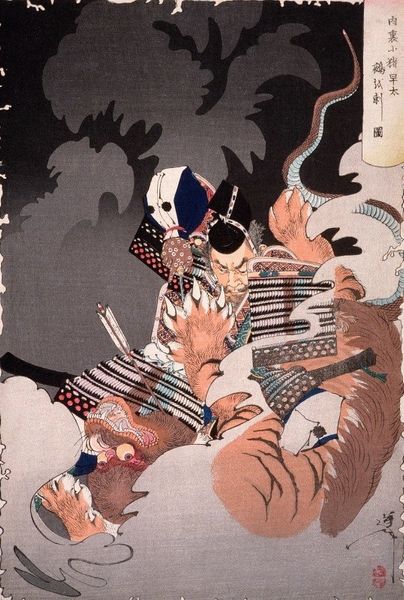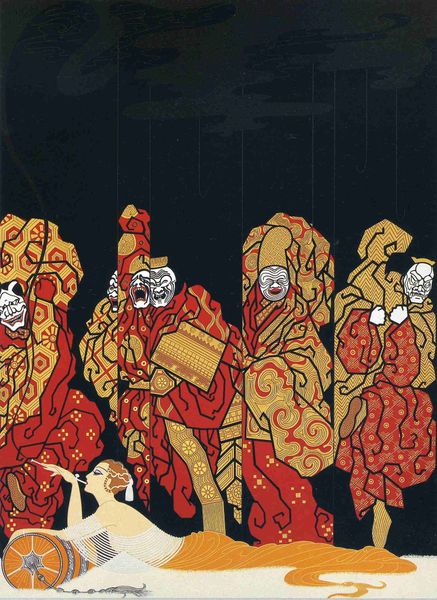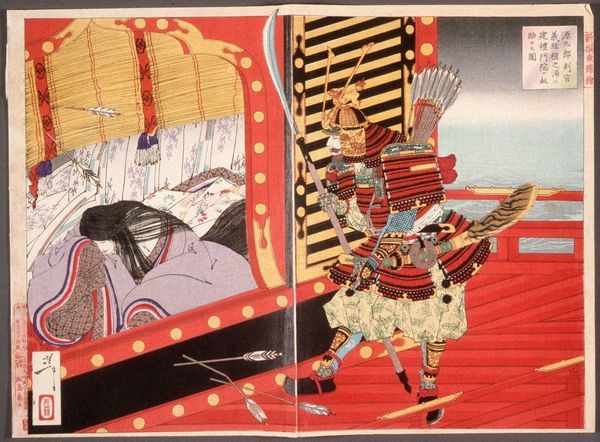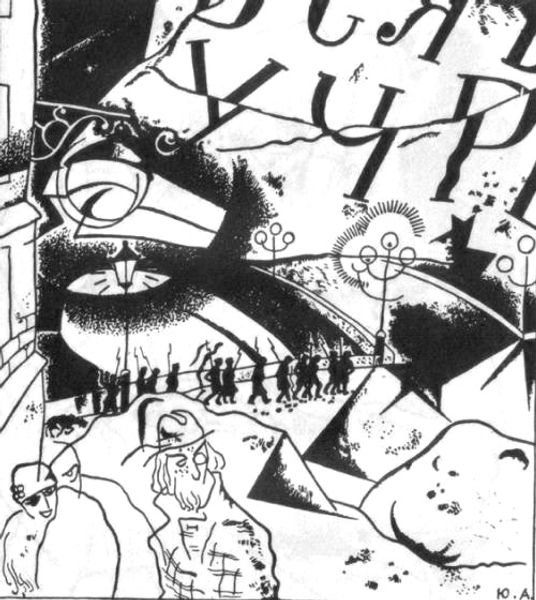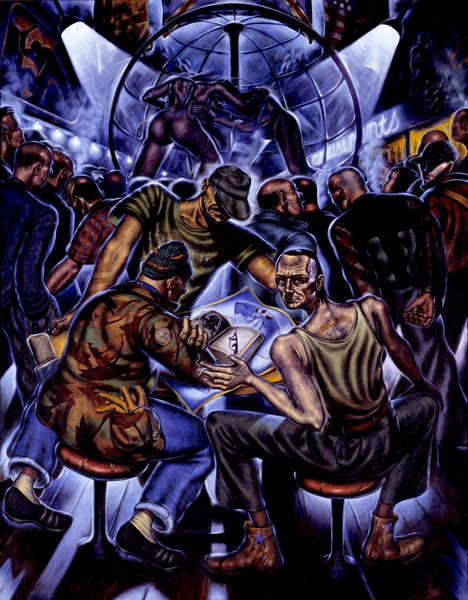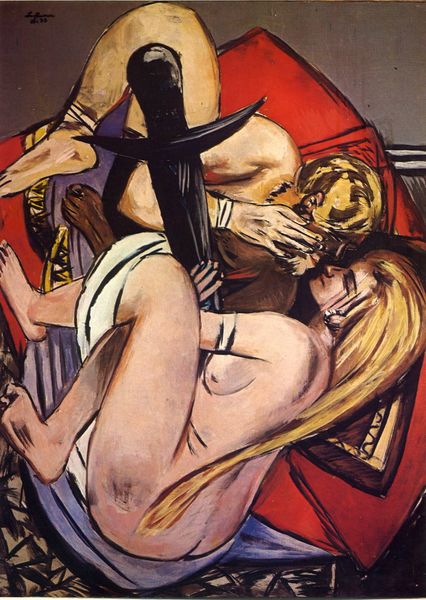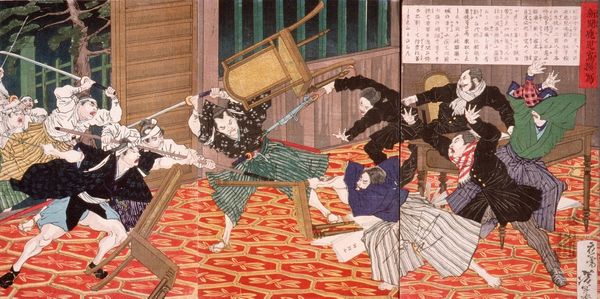
Copyright: Erro,Fair Use
Curator: This vibrant and unsettling mixed-media collage from 1976 is entitled "The Battle of Saporro" by the artist Erró. It’s quite a powerful statement. Editor: Yes, it has an immediately aggressive feel to it. There's a real tension, with a strong emphasis on harsh lines and seemingly contrasting elements—the cartoonish soldiers juxtaposed with figures that recall traditional Japanese art. How was something like this made? Curator: Erró was deeply invested in exploring the interplay of disparate cultural narratives, particularly through the lens of power and representation. The composition layers comic book aesthetics with traditional Orientalist imagery to challenge existing stereotypes and cultural hegemonies. You might say it questions how we consume and construct narratives of conflict and desire, especially through art. Editor: It’s a powerful observation to think about its production; it appears the piece was layered, physically collaged with print media and graphic applications. The juxtaposition certainly creates a disruptive effect. The soft tones and lines used for the reclining geishas clash against the more boldly rendered militaristic figures looming over them. Curator: Exactly, that clash is deliberate. Consider the implications of the male gaze imposed by the soldiers upon the submissive postures of the women. This becomes a complex comment on imperialism, eroticism, and the power dynamics embedded within art itself. Furthermore, think of the position of the weapon laying down in parallel with the female body and its intimate connotations. It challenges the relationship between the feminine and warfare. Editor: Seeing these comic-style figures arranged this way also forces me to think about pop culture's commodification of war and conflict; what sort of production and reproduction of violence did it create? Curator: A critical point. It invites the viewer to question the glorification and sexualization of violence prevalent in both historical art and popular media. Erró's deconstruction of these narratives through his unique blend of pop and political commentary makes this piece undeniably relevant even today. Editor: Ultimately, this layering, materially and thematically, certainly holds up. It is difficult to not contemplate production practices when experiencing such an intriguing arrangement of varied styles. Curator: Absolutely. It’s a challenging, confrontational piece, but one that speaks volumes about the power of art to interrogate the very fabric of our society and cultural past.
Comments
No comments
Be the first to comment and join the conversation on the ultimate creative platform.
